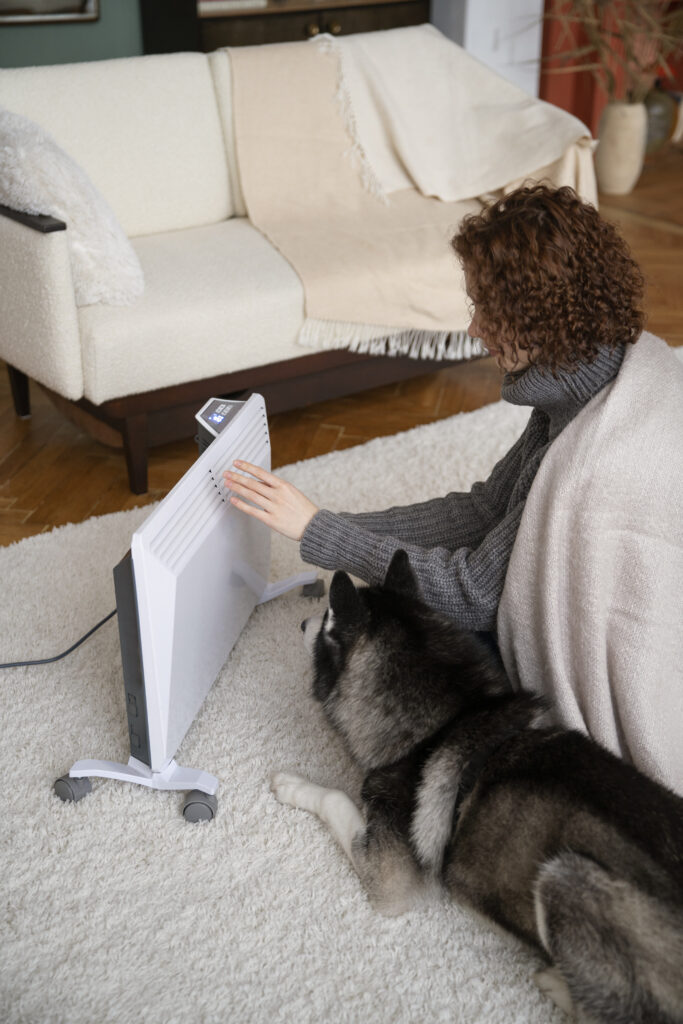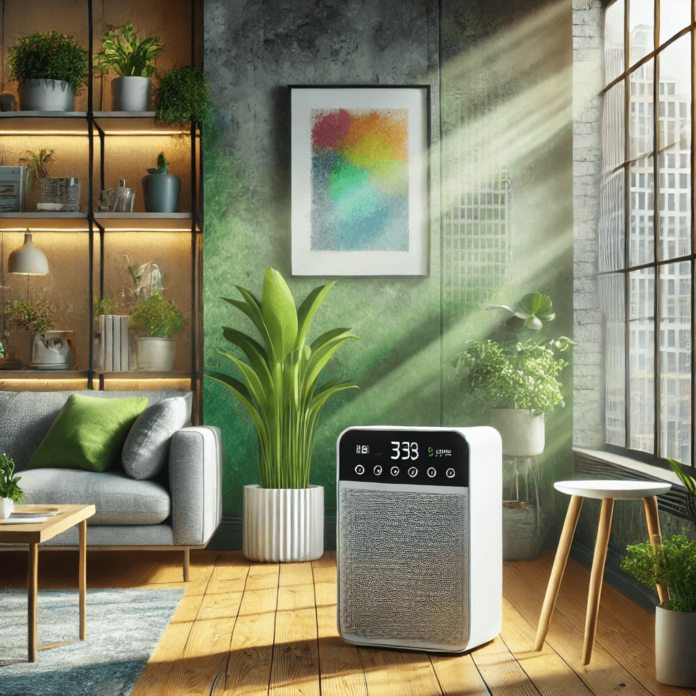Introduction
- Understanding Urban Air Pollution
- Top Reasons to Use Air Purifiers in Urban Areas
- Key Features to Look for in Air Purifiers for Urban Areas
- How to Maximize Air Purifier Efficiency in Urban Settings
- Top Air Purifiers for Urban Areas
- Urban Air Quality Solutions: Practical Steps for Cleaner Cities
- Conclusion
- FAQs
Improving urban air quality is crucial for healthier living in cities plagued by smog and pollution. Effective urban air quality solutions include advanced technologies like air purifiers, green infrastructure, and sustainable transportation systems. Air purifiers play a significant role in smog reduction, removing harmful particles such as PM2.5 and VOCs from indoor air. Combined with citywide initiatives like promoting electric vehicles and expanding green spaces, these measures create cleaner and safer environments. This guide explores practical solutions to combat smog and improve air quality in urban areas.
Urban areas are bustling hubs of activity but also hotspots for air pollution. The dense population, vehicular emissions, industrial activities, and limited green spaces significantly degrade air quality. Air purifiers are a powerful tool for combating the harmful effects of urban pollution. This guide explores the top reasons to use air purifiers in urban areas and how they can improve health, comfort, and overall well-being.
Understanding Urban Air Pollution
Urban air pollution comprises various harmful particles and gases, including:
- Particulate Matter (PM2.5 and PM10): Microscopic particles that penetrate deep into the lungs and bloodstream.
- Nitrogen Dioxide (NO2): Emitted by vehicles and industrial activities, it irritates the respiratory system.
- Volatile Organic Compounds (VOCs): Found in household products and outdoor emissions, they contribute to indoor air pollution.
- Carbon Monoxide (CO): A harmful gas from incomplete combustion of fossil fuels. These pollutants worsen air quality and directly impact urban dwellers’ health, particularly children, the elderly, and those with pre-existing conditions.
Top Reasons to Use Air Purifiers in Urban Areas
1. Removal of Fine Particles and Pollutants
Urban areas are saturated with fine particulate matter from vehicles, construction sites, and industrial emissions. Air purifiers with True HEPA filters capture up to 99.97% of particles as small as 0.3 microns, including dust, pollen, and smoke.
2. Combating Health Issues Caused by Pollution
Prolonged exposure to urban pollution increases the risk of respiratory issues, cardiovascular diseases, and weakened immune systems. Air purifiers help mitigate these risks by significantly reducing airborne pollutants.
3. Enhancing Sleep Quality
Air purifiers create a healthier bedroom environment by eliminating allergens and irritants that disturb sleep. Cleaner air leads to better oxygen intake and reduces nighttime coughing or congestion, ensuring restful sleep.
4. Managing Allergies and Respiratory Conditions
For allergy sufferers, urban living can be a nightmare. Pollen, pet dander, and mold spores exacerbate symptoms. HEPA-equipped air purifiers capture these allergens, providing much-needed relief.
5. Neutralizing Urban Odors
City living often comes with unpleasant odors from traffic, waste, and industrial areas. Activated carbon filters in air purifiers absorb odors and harmful gases, leaving indoor spaces smelling fresh.
6. Protecting Vulnerable Groups
Children, the elderly, and individuals with asthma are more susceptible to the effects of poor air quality. Air purifiers provide a safe indoor environment for these groups, reducing exposure to harmful pollutants.
Key Features to Look for in Air Purifiers for Urban Areas
High CADR (Clean Air Delivery Rate)
Ensure the air purifier can handle the volume of pollutants in urban environments. A higher CADR rating indicates faster purification.
True HEPA Filters
These are essential for capturing fine particles like PM2.5 and allergens.
Activated Carbon Filters
Ideal for neutralizing odors and VOCs, making them crucial for urban homes.
Smart Features
Look for IoT-enabled devices with air quality sensors and real-time monitoring for better adaptability.
Compact and Quiet Operation
Given limited space in urban apartments, choose compact models that operate quietly without compromising performance.
How to Maximize Air Purifier Efficiency in Urban Settings
- Placement Matters: Position the purifier near pollution entry points, like windows or doors.
- Run Continuously: Operate during high pollution hours, such as mornings and evenings.
- Filter Maintenance: Replace filters regularly to maintain performance.
Top Air Purifiers for Urban Areas
- Dyson Pure Cool TP07: Combines air purification with a cooling fan, perfect for modern apartments.
- Blueair HealthProtect 7470i: High CADR, low noise, and advanced filtration for urban settings.
- Levoit Core 400S: Budget-friendly, compact, and effective for smaller spaces.
Urban Air Quality Solutions: Practical Steps for Cleaner Cities

Improving urban air quality requires a multifaceted approach to address the rising levels of pollution in city environments. Urban air quality solutions focus on reducing emissions, filtering indoor air, and adopting sustainable practices.
1. Deploying Air Purifiers for Indoor Spaces
Air purifiers equipped with HEPA and activated carbon filters effectively capture fine particles like PM2.5, dust, and VOCs, which are common in urban areas. These devices are essential for mitigating indoor air pollution, especially for homes near industrial zones or busy roads.
2. Expanding Green Spaces
Planting trees and developing green roofs help absorb carbon dioxide and filter particulate matter, significantly improving urban air quality. Green spaces also reduce urban heat, indirectly decreasing smog levels.
3. Promoting Sustainable Transportation
Encouraging the use of public transport, electric vehicles, and cycling reduces vehicle emissions, one of the leading causes of poor air quality in cities. Government incentives for cleaner transport options can amplify these efforts.
Conclusion
Air purifiers are indispensable for urban living, offering a practical solution to combat air pollution and its associated health risks. From removing fine particles to neutralizing odors, these devices enhance indoor air quality, ensuring healthier and more comfortable living spaces. Investing in the best air purifier not only improves daily life but also contributes to long-term health and well-being in bustling urban environments.
FAQs
1. Can air purifiers eliminate all urban pollutants?
Air purifiers significantly reduce pollutants like PM2.5, VOCs, and allergens, but they work best when combined with ventilation and regular cleaning.
2. How often should I replace filters in polluted cities?
Most filters require replacement every 6–12 months, but in high-pollution areas, more frequent changes may be necessary.
3. Are air purifiers effective for small apartments?
Yes, compact models like Levoit Core 400S are designed for small spaces and provide efficient air purification.
4. Do air purifiers remove urban odors?
Yes, devices with activated carbon filters effectively neutralize odors from traffic, waste, and cooking.
5. Can air purifiers help with asthma in urban areas?
Absolutely. HEPA filters capture asthma triggers like dust, pollen, and pet dander, providing significant relief.














